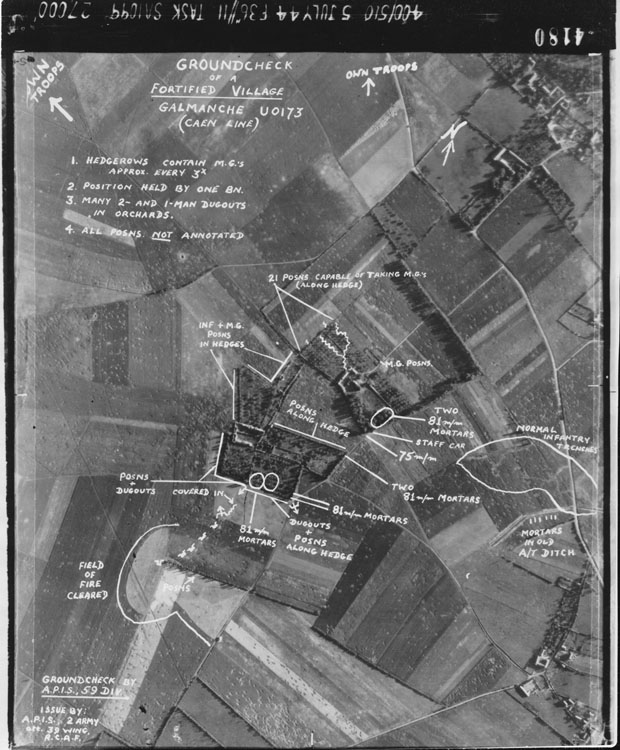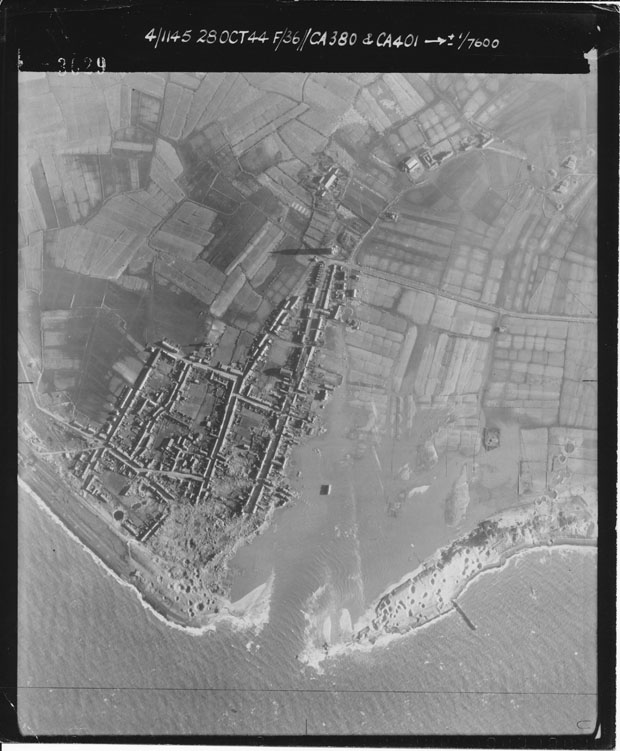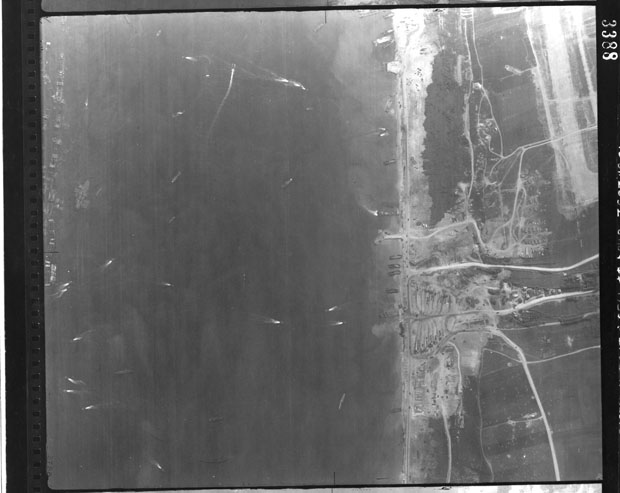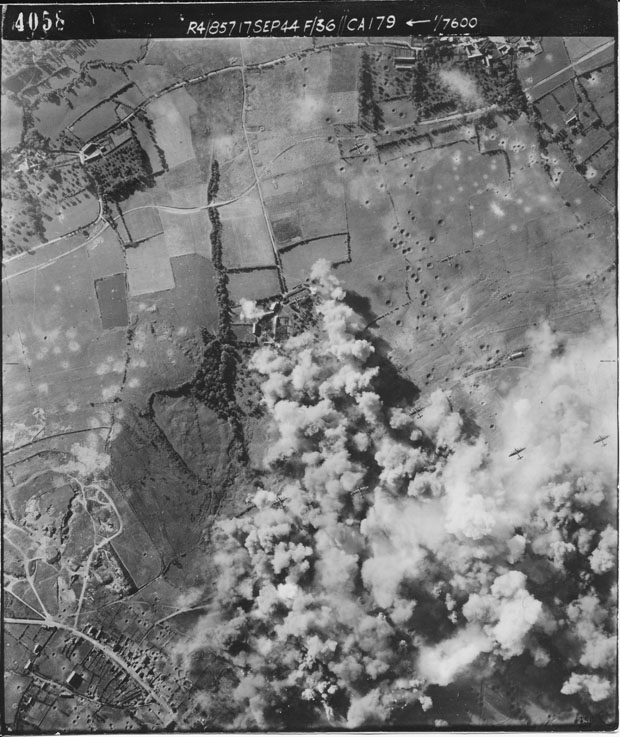In an age before satellite surveillance, planes were the only method of gathering photographic intelligence on enemy defences and troop locations. The photos show everything from German bunkers guarding the beaches of Normandy to the progress of Allied troops in the wake of D-Day, 68 years ago today. Browse these photos from World War II by hovering over each image. You can also read the full story and get a step-by-step walk through of the Pegasus Bridge photo.
Hover over each photo to zoom in and see more detail.
The Pegasus Bridge
Pegasus Bridge and surrounding area shown about a month after D-Day. The gliders that brought the troops to capture the bridge (near the bottom of the photo) are visible nearby; this was the opening battle of D-Day. At the time this photo was taken, it was still close to the front lines. Fox holes and other earthworks for protecting tanks and vehicles are visible in the fields near the centre of the photo. Mouse over Horsa bridge, above Pegasus in the photo, and you can see a convoy of vehicles crossing.

A German bunker on Juno Beach, near the village of Courseulles-sur-Mer, shortly before D-Day. On the left side of the photo is the village, look closely enough near the edge of the image and you can see what appear to be two human figures walking down the street. To the right side of the photo are two smaller covered bunkers and barbed wire. In front of the larger, main bunker in the centre is a concrete wall. This sheltered it from naval gunfire, but allowed defenders to shoot from the sides at soldiers on the beach. This would prove deadly effective on D-Day: the Canadian unit that captured this area lost all but 27 of its members.







